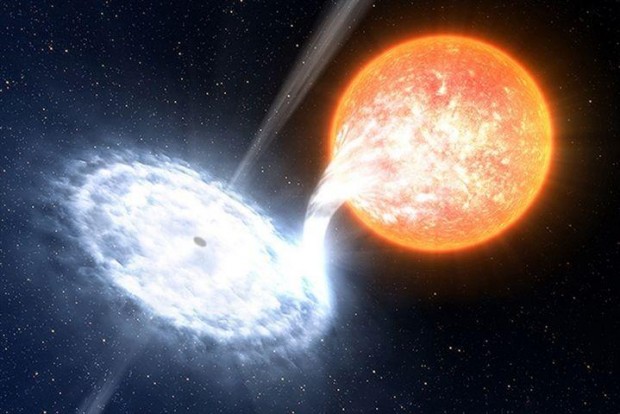Black hole eruptions so bright as 1000 suns spotted by astronomers

Violent red flashes brighter than 1,000 suns have been spotted emitting from a distant black hole by British astronomers.
The black hole, named V404 Cygni, lies 7,800 light years away from Earth (or about 46 quadrillion miles), and is thought to have started flashing after spitting out jets of matter which it could not swallow.
The rare spectacle was spotted by an international team of astronomers working at the University of Southampton, who believe the brief flashes could tell us more about the nature of black holes.
Using the William Herschel Telescope in the mountains of the Canary Islands, the team took ultra high-speed images of the flashes in July 2015, poring over them before eventually publishing their research this month.
Dr Poshak Gandhi, lead author of the study, published in the Monthly Notices of the Royal Astronomical Society journal, said: “These red flashes were found to be strongest at the peak of the black hole’s feeding frenzy.”
“We speculate that when the black hole was being rapidly force-fed by its companion orbiting star, it reacted violently by spewing out some of the material as a fast-moving jet. The duration of these flashing episodes could be related to the switching on and off of the jet, seen for the first time in detail.”

Flashes like these occur suddenly, and don’t last very long – some of the outbursts in the recent V404 Cygni eruption lasted for as little as 1/40th of a second, faster than the blink of an eye.
Most eruptions are also fairly dim, so these latest ones have provided scientists with a perfect opportunity for study.
Dr Gandhi said that the exceptional brightness of the 2015 event has motivated astronomers worldwide to work more closely with each other, in an effort to observe future outbursts before they miss their chance.
He said: “[The eruptions’] short durations and strong emissions across the entire electromagnetic spectrum require close communication, sharing of data, and collaborative efforts amongst astronomers.”
How to submit an Op-Ed: Libyan Express accepts opinion articles on a wide range of topics. Submissions may be sent to oped@libyanexpress.com. Please include ‘Op-Ed’ in the subject line.
- Libya’s HCS invites applicants for key state roles - December 31, 2023
- UK calls on Iran to prevent escalation in Israel-Hamas conflict - November 05, 2023
- Libyan Interior Minister: Immigrant shelter costs a fortune - November 05, 2023


